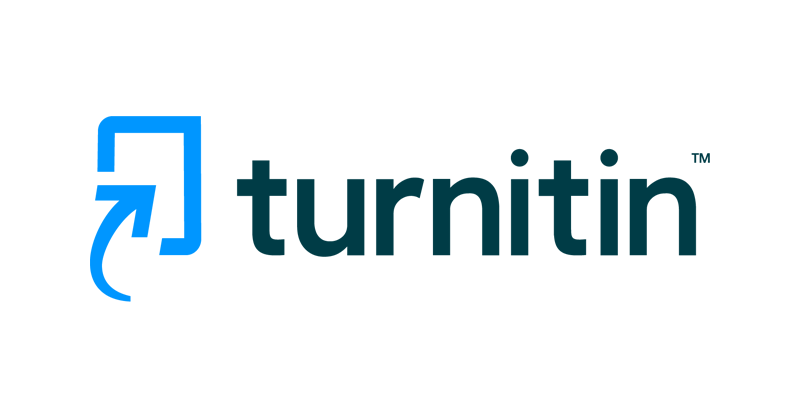Analysis of Added Value And Development Strategy of Cocoa Agro-Industry Based Farmer Groups at Mulyo Jati Farmer Group Mojokerto District
Abstract
This study aims to examine the cocoa supply chain, the added value of chocolate products, and the development strategies for the cocoa agroindustry at IPK Kelompok Tani Mulyo Jati in Mojokerto Regency to improve farmers' welfare. This research emphasizes the important role of farmer groups and agroindustries in enhancing the added value of cocoa products through effective strategies. The research method used is quantitative, with purposive sampling for respondent selection and data collection through interviews, observations, and documentation. Data analysis was performed using supply chain analysis, the Hayami method, and SWOT analysis. The results show that the supply chain includes product flow from farmers to consumers, financial flow from consumers to farmers, and two-way information flow related to cocoa bean care, price, quantity, quality, and the selling price of processed products. The added value of chocolate bars (10 grams) and cocoa powder (100 grams) is Rp 464,967/kg and Rp 82,667/kg, respectively. The recommended development strategy for the cocoa agroindustry is positioned in the white area of the competitive matrix, implementing the S-O strategy, which maximizes strengths and opportunities by maintaining product quality, increasing promotion, and expanding business and market reach.
References
Gandhy, A., Prabowo, Y. D., & Nurunisa, V. F. (2020). Analisis Nilai Tambah Produk Olahan Kakao Pada CV Wahyu Putra Mandiri, Kabupaten Trenggalek, Jawa Timur. AgriHumanis: Journal of Agriculture and Human Resource Development Studies, 1(2), 77–86.
Hartono, J. (2018). Metoda Pengumpulan dan Teknik Analisis Data (Data Collection Methods and Analysis Techniques). Penerbit Andi.
Herdhiansyah, D., & Asriani. (2018). Strategi Pengembangan Agroindustri Komoditas Kakao di Kabupaten Kolaka–Sulawesi Tenggara Agroindustry Development Strategy of Cocoa Commodity in Kolaka Regency-Southeast Sulawesi. Jurnal Agroindustri Halal, 4(1), 030–041.
Pratiwi, N. A., Harianto, H., & Daryanto, A. (2017). Peran agroindustri hulu dan hilir dalam perekonomian dan distribusi pendapatan di Indonesia. Jurnal Manajemen & Agribisnis, 14(2), 127.
Prihadianto, R. D., Hariyati, Y., Ibanah, I., Muhtadi, K., Suwasono, S., & Sumarno, D. (2022). Model Ideal Sistem Manajemen Rantai Pasok Agribisnis Kakao: Pendekatan Soft System Methodology (SSM). JSEP (Journal of Social and Agricultural Economics), 15(3), 333–348.
Puspitasari, N. K., Porajouw, O., Laoh, E. O. H., & Tarore, M. L. G. (2015). Strategi Pengembangan Agroindustri Berbasis Biji Kakao di Desa Poyuyanan Kecamatan Passi Barat Kabupaten Bolaang Mongondow. COCOS, 6(7).
Rukajat, A. (2018). Pendekatan penelitian kuantitatif: quantitative research approach. Deepublish.
Siyoto, S., & Sodik, A. (2015). Dasar Metodologi Penelitian (Vol. 148). Literasi Media.
Soetriono. Suwandari A. (2016). Pengantar Ilmu Ilmu Pertanian. Malang: Intimedia, 176.
Sombuk, D. M., & Loho, A. E. (2019). Nilai Tambah Pengolahan Buah Stroberi Menjadi Juice Double Berry (Studi Kasus Coffe D’mooat Di Desa Mooat Kabupaten Bolaang Mongondow Timur). AGRI-SOSIOEKONOMI, 15(2), 253–260.
Sumargo, B. (2020). Teknik sampling. Unj press.
Tyas, A. P., & Ermawati, E. A. (2020). Strategi Pengembangan Doesoen Kakao Sebagai Destinasi Wisata Edukasi di Banyuwangi. Jurnal Pariwisata Pesona, 5(1), 35–40.
Yastika, I. W. A., Ustriyana, I. N. G., & Yudhari, D. A. S. (2013). Nilai Tambah Kakao Fermentasi pada Unit Usaha Produktif (UUP) Tunjung Sari Br. Cangkup, Ds. Pesagi, Kec. Penebel, Kab. Tabanan. Journal of Agribusiness and Agritourism, 44941.

This work is licensed under a Creative Commons Attribution-ShareAlike 4.0 International License.
Jurnal Sosial Ekonomi Pertanian (J-SEP) has CC-BY-SA or an equivalent license as the optimal license for the publication, distribution, use, and reuse of scholarly work.
The work is simultaneously licensed under a Creative Commons Attribution-ShareAlike 4.0 International License, which permits others to share the work with an acknowledgement of the authorship and the work's initial publication in this journal. Authors who publish with this journal retain their copyright and grant the journal the right of first publication.

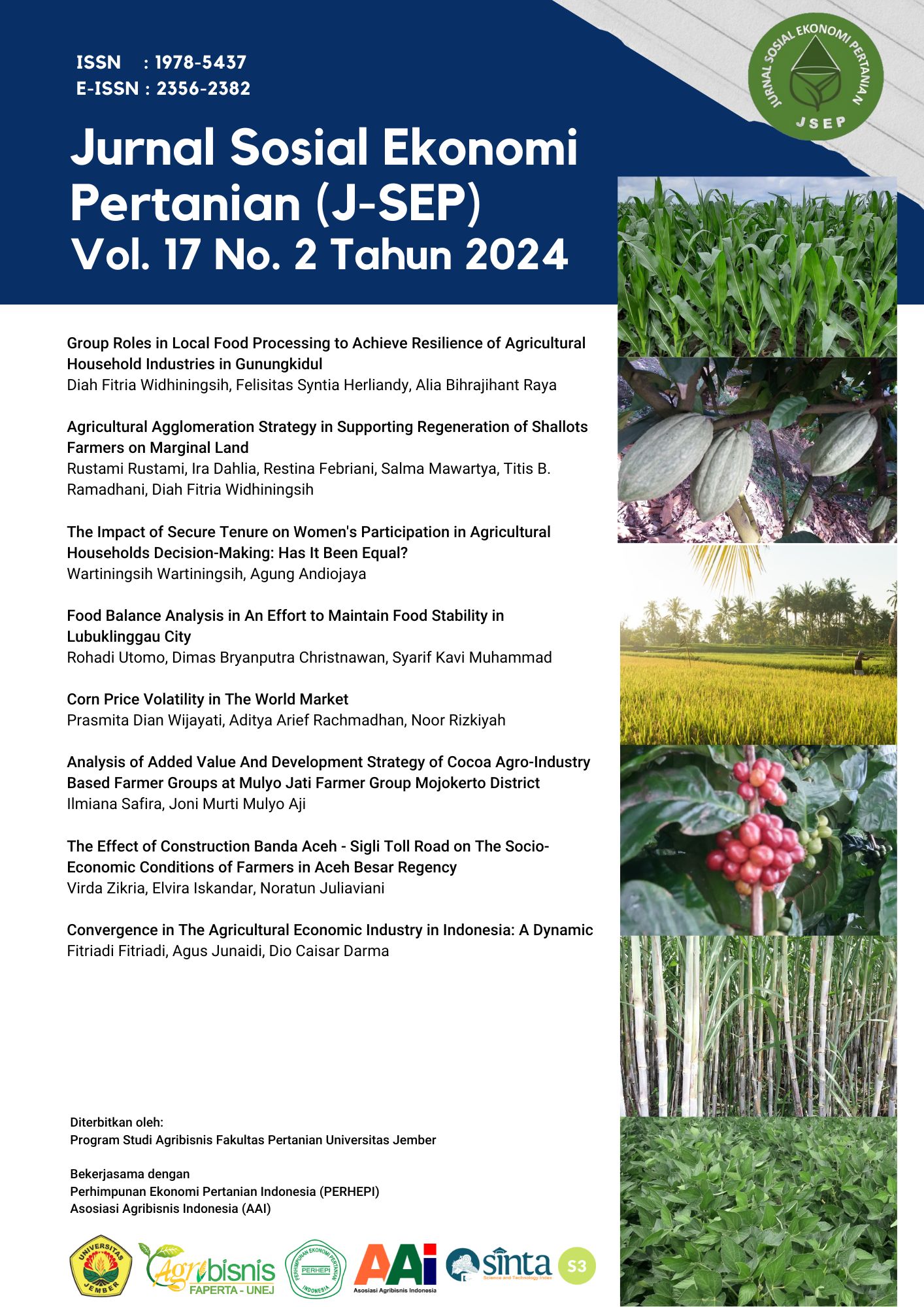
3.png)

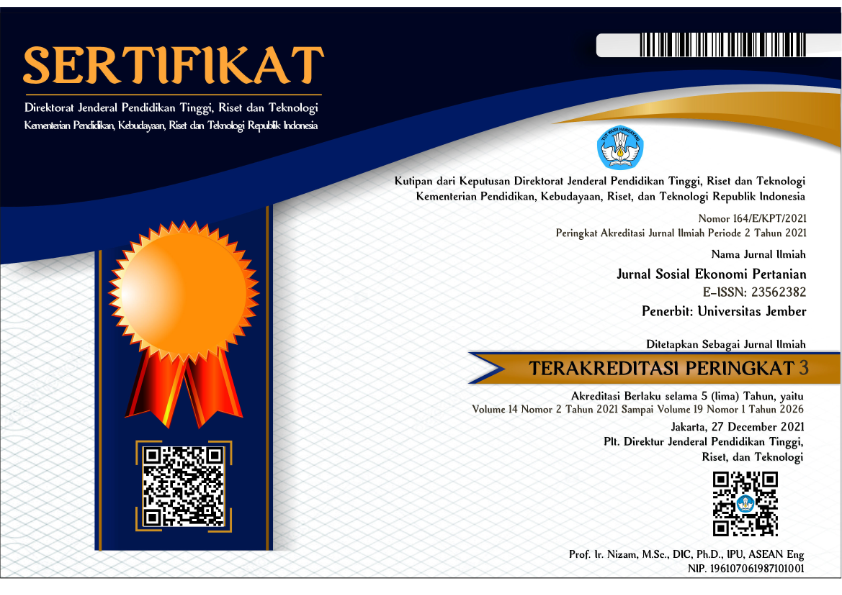
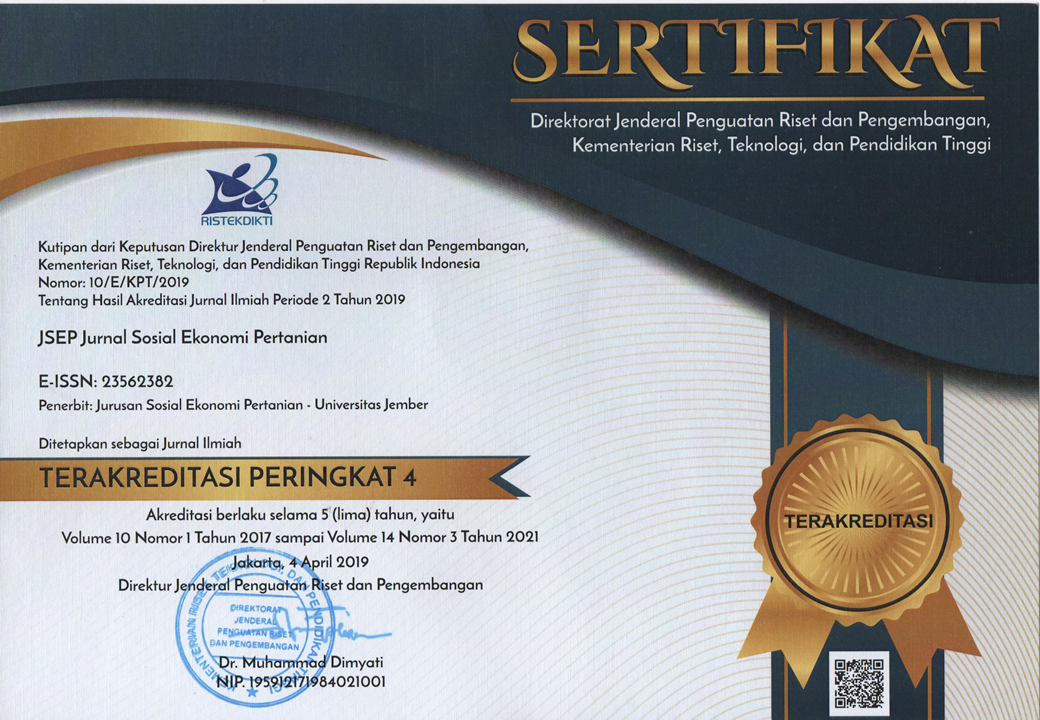

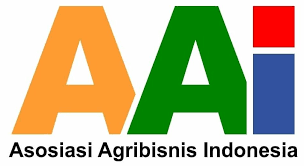

.png)










